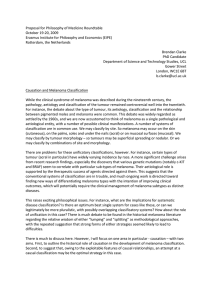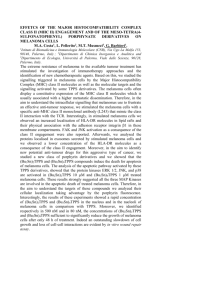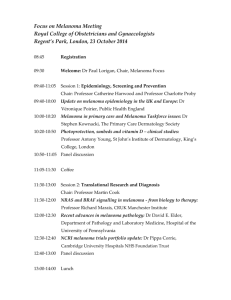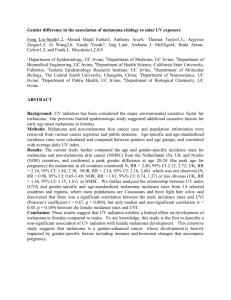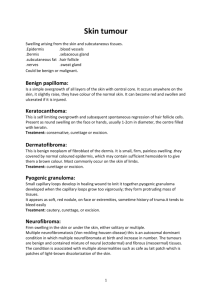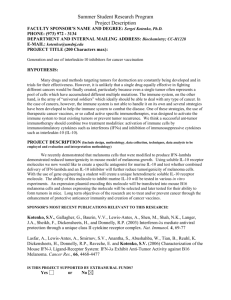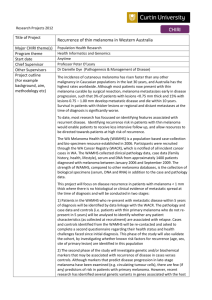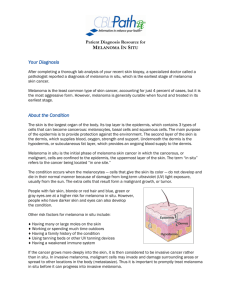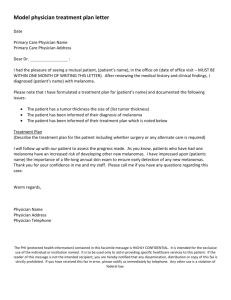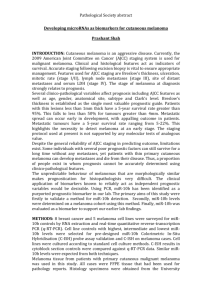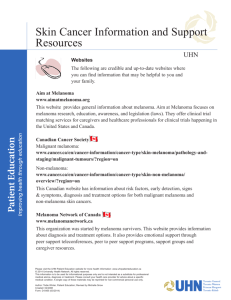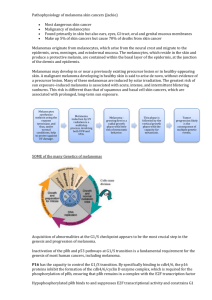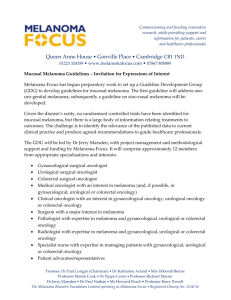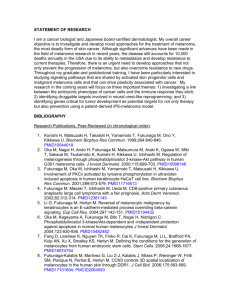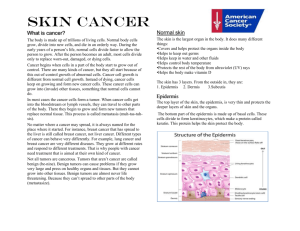The functional characterization of skin resident T cells in patients
advertisement
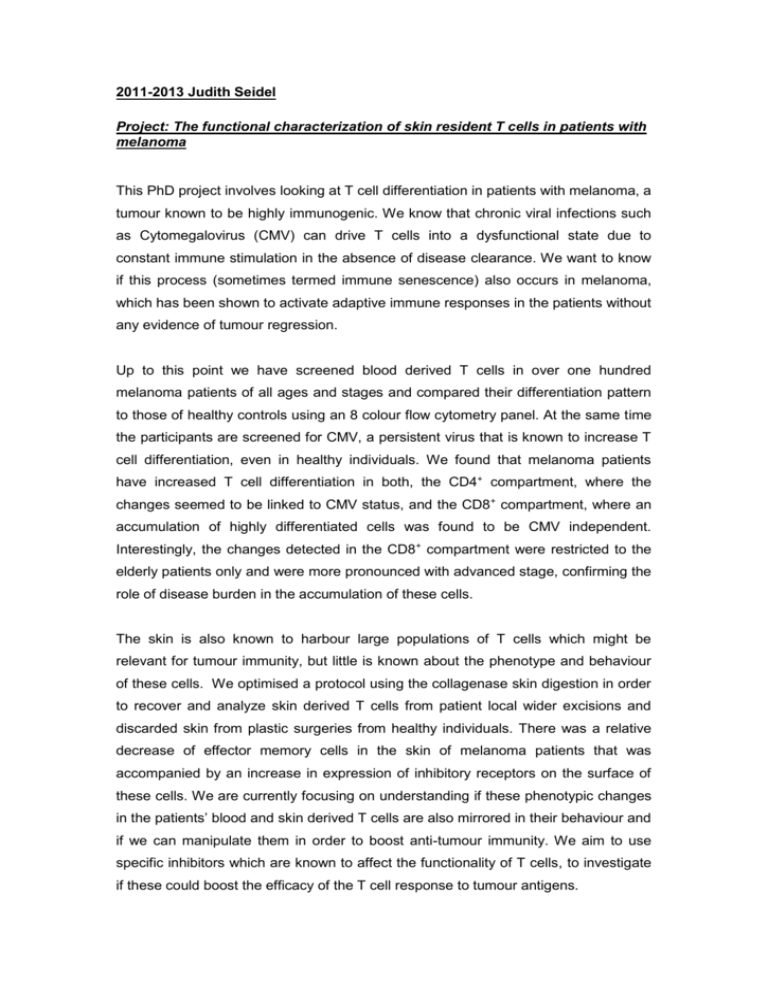
2011-2013 Judith Seidel Project: The functional characterization of skin resident T cells in patients with melanoma This PhD project involves looking at T cell differentiation in patients with melanoma, a tumour known to be highly immunogenic. We know that chronic viral infections such as Cytomegalovirus (CMV) can drive T cells into a dysfunctional state due to constant immune stimulation in the absence of disease clearance. We want to know if this process (sometimes termed immune senescence) also occurs in melanoma, which has been shown to activate adaptive immune responses in the patients without any evidence of tumour regression. Up to this point we have screened blood derived T cells in over one hundred melanoma patients of all ages and stages and compared their differentiation pattern to those of healthy controls using an 8 colour flow cytometry panel. At the same time the participants are screened for CMV, a persistent virus that is known to increase T cell differentiation, even in healthy individuals. We found that melanoma patients have increased T cell differentiation in both, the CD4+ compartment, where the changes seemed to be linked to CMV status, and the CD8+ compartment, where an accumulation of highly differentiated cells was found to be CMV independent. Interestingly, the changes detected in the CD8+ compartment were restricted to the elderly patients only and were more pronounced with advanced stage, confirming the role of disease burden in the accumulation of these cells. The skin is also known to harbour large populations of T cells which might be relevant for tumour immunity, but little is known about the phenotype and behaviour of these cells. We optimised a protocol using the collagenase skin digestion in order to recover and analyze skin derived T cells from patient local wider excisions and discarded skin from plastic surgeries from healthy individuals. There was a relative decrease of effector memory cells in the skin of melanoma patients that was accompanied by an increase in expression of inhibitory receptors on the surface of these cells. We are currently focusing on understanding if these phenotypic changes in the patients’ blood and skin derived T cells are also mirrored in their behaviour and if we can manipulate them in order to boost anti-tumour immunity. We aim to use specific inhibitors which are known to affect the functionality of T cells, to investigate if these could boost the efficacy of the T cell response to tumour antigens. Using fluorochrome conjugated peptide:MHC multimers, we were able to screen participants for the presence of melanoma specific cells reactive to the melanoma associated antigens Melan-A and NY-ESO-1. The melanoma specific cells detected in the blood remained at low frequencies in most patients and did not show characteristics of late differentiation. Interestingly, these cells were found to accumulate in sites of tumour formation and invasion (primary melanoma and lymph nodes), where they were found to have altered surface marker expression, indicating local modulation of the cells. Uninvolved skin was not found to harbour melanoma specific cells, confirming selective recruitment and proliferation of the cells to the tumour site.
